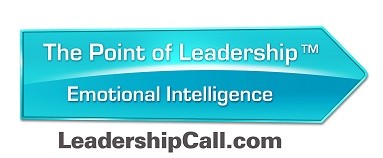Making the Time to Focus on Interpersonal Connections Within the Workplace
Emotional Intelligence EQ Competency for well-being: Self-regard, Optimism, Interpersonal Relationships, & Self-Actualization.
When we think of well-being and self-care, most of us think about how we take care of ourselves outside of work. However, since many of us spend a large portion of our days at work, it’s time to rethink this idea. The pandemic further blurred this separation with so many people working in their houses, while also trying to juggle online schooling for their children and competing demands of both home and work life. For most of us, the time that we spend at work equals about 1/3 of our life. If we only focus on well-being when we leave work, then we are missing a great opportunity to not only increase our well-being, but also the well-being of others that work alongside us.
There is an old expectation that we should be able to leave our personal lives at the door when we enter work. However, I don’t know about you but when I’m having a difficult time with something in my personal life, it frequently trickles into my work life. Sometimes it shows up as irritability, impatience, short-fussed, or even overly defensive. Furthermore, if someone you love has to go into the hospital just hours before you went to work, it is nearly impossible to stop thinking about the fears and concerns that you have once you show up at work. When we have a culture of well-being in the workplace, it opens up space to acknowledge that our life outside of work does impact our work life, in one way or another. It also sets the tone that there will be times when we are not performing at our optimum and that is okay. Establishing a culture of well-being at work creates space for employees to feel deeply connected because there is a space to share what is going on outside of work.
What is a well-being indicator?
We all want to be happy. As a society, we spend a lot of time and money trying to find that inner happiness. Sometimes we are willing to do and try anything to grasp that carrot of happiness. Happiness is defined as being satisfied with life and includes a general feeling of contentment. Happiness is tied to emotional intelligence but it’s also a product of emotional intelligence and is intertwined with all of our EI competencies. The four areas that science has found to contribute the most to our happiness levels are: self-regard, optimism, interpersonal relationships, and self-actualization. Self-regard is an honest inventory of our strengths and weaknesses and oftentimes shows up in job interviews as self-confidence. Optimism is our ability to remain resilient, even when confronted with setbacks in life. Interpersonal relationships relate to the ability to build trust in mutually satisfying relationships. Self-actualization represents a commitment to the growth process and it’s when our passions connect with purpose, which turns into the pursuit of meaning.
What can organizations do to help establish a culture of well-being?
So much of our happiness is an inside job, but companies can easily tap into well-being by accessing the power of interpersonal relationships within the workplace. We need to learn to see people outside of their work roles, titles, and responsibilities. We can do this by becoming curious about people and not just focused on their performance. Another way organizations can create this culture of well-being is by setting aside time to focus on well-being and bring this terminology into the culture of the organization. Instead of asking, “What are you working on?” we can ask questions like, “How are things going? And then stop and pause to listen to how they respond. This helps people feel cared about not only as an employee but also as a person. When well-being is woven into the framework of the organization, it helps to make people feel more connected to the people that they are working alongside. This is what builds interpersonal connections.
Call to Action
How do I foster habits that support well-being in the workplace?
- Make it Visual-This could be something as simple as creating a slide for the TV monitor in the break room about well-being to sharing different tools and blogs with the employees. Healthy Mind creates a weekly blog called Workplace Wednesday where they provide a tool and a practice to implement in the workplace. https://hminnovations.org/blog/learn-practice/workplace-wednesday-be-uncertain
- Smile-We appear more approachable when we have a smile on our face. People gravitate towards happy people. Don’t let the Covid face mask be the reason why you stop smiling. Real smiles can be seen when we smile with our eyes.
- Walking Meetings- You could have walking meetings since it’s been proven to promote out-of-the-box type thinking and helps support both mental and physical health.
- Help Yourself First- We can support the health and happiness of our employees by taking care of ourselves first. https://business.calm.com/hr-self-care?utm_source=b2b-blog&utm_medium=post&utm_campaign=0321-humanres-respage#self-care-guide
- Take Time to Explore Your Timeline of Emotions- The Ekmans’ Atlas of Emotions Tool helps to break down how our emotions are made up of a series of triggers and thoughts and unfold in a timeline. http://atlasofemotions.org/#continents When we bring awareness into these areas, it gives us more choice.
- Create a Common Language- What can you do today to bring in the idea of well-being to your workplace and create a common definition around it? When I think of wellness, my mind thinks about physical health. When I think of well-being, my mind goes towards a holistic perspective towards health and includes mental, physical, emotional, and spiritual. We don’t show up at work every day with only our mental selves. We show up with all sides of us, even if some of those sides are struggling.
- Implement Well-Being Check-ins- Create a safe place for employees to self-assess their mental well-being and fight the stigma that they have to have it all put together, all of the time. We all have our breaking points and we need to create space to not only break down but to feel support to show up again the next day. The boss/employee relationship is a lot like the teacher/student and parent/child relationship. We don’t leave school having it all figured out. We need ongoing teaching and coaching from people that have knowledge & wisdom to share within the work environment.
Establishing a culture of well-being in the workplace is a win/win investment for both the employees and the company. The return of investment (ROI) is high because it’s an investment in people’s lives!

Anna is a certified EQ-i 2.0 Emotional Intelligence Facilitator whose work focuses on the intersection of emotional intelligence, interpersonal relationships, and well-being by using a holistic, mind-body-oriented approach. Anna’s mission is to combine insights from psychology and neuroscience into practical strategies that support well-being. https://www.eqembodimenteducator.com/




